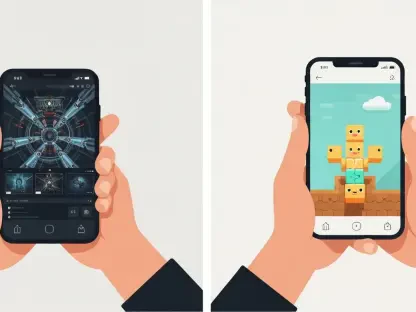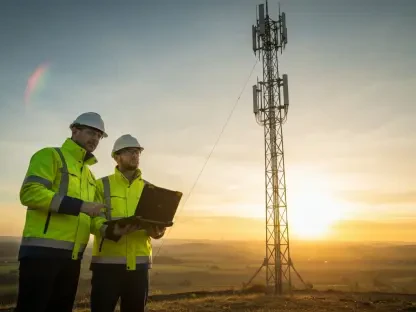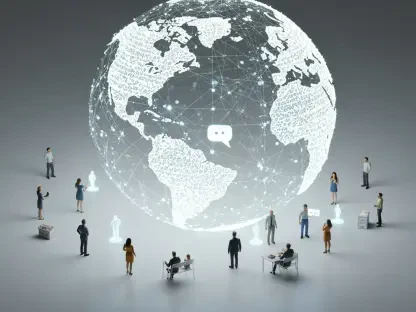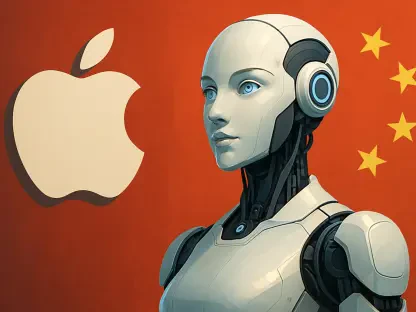I’m thrilled to sit down with Nia Christair, a leading expert in mobile technology, whose deep expertise spans mobile gaming, app development, device hardware design, and enterprise mobile solutions. With Apple recently hitting the monumental milestone of selling 3 billion iPhones since 2007, as announced during their latest earnings call, Nia is the perfect person to help us unpack what this means for the tech giant. In our conversation, we dive into the factors behind Apple’s incredible growth, the significance of the iPhone to their revenue, the impact of market trends and potential challenges like tariffs, and how Apple is positioning itself amidst fierce competition in the tech landscape. Let’s get started.
Can you walk us through the significance of Apple selling 3 billion iPhones since 2007, and what this says about their journey as a company?
This milestone is absolutely staggering. Selling 3 billion iPhones in just under two decades showcases Apple’s unparalleled ability to innovate and capture the market. It reflects not just the popularity of the iPhone but also how Apple has transformed from a niche tech player into a cultural and economic juggernaut. The iPhone isn’t just a product; it’s a lifestyle, a status symbol, and a gateway to Apple’s ecosystem. This achievement highlights their mastery in building consumer loyalty and consistently delivering products that resonate globally.
What do you think has been the biggest driver behind reaching such a massive sales number in this timeframe?
I’d say it’s a combination of relentless innovation and strategic market expansion. Early on, the iPhone redefined what a smartphone could be, blending design with functionality in a way no one else had. Over the years, features like the App Store, Face ID, and advanced cameras kept users hooked. But equally important has been Apple’s push into emerging markets, where growing middle classes have fueled demand. Their ability to tailor pricing and financing options in different regions has made the iPhone accessible to a much broader audience.
Apple sold their first billion iPhones in nine years by 2016, and then 2 billion more in the next nine years. What’s fueling this accelerated growth in recent times?
The pace of growth in the last nine years comes down to a few key shifts. Technology advancements, like 5G integration and better battery life, have made newer models more compelling upgrades. Apple has also gotten smarter about their product lineup, offering a range of models from budget-friendly to premium, capturing more demographics. And let’s not forget their aggressive expansion into markets like India and parts of Southeast Asia, where smartphone penetration is still on the rise. These regions have become huge growth engines for Apple.
With iPhone sales up 13% year-over-year, generating $44.6 billion this quarter, what do you see as the main reasons behind this strong performance?
This surge is likely tied to a mix of excitement over recent iPhone models and broader consumer trends. The latest iPhones, with their enhanced cameras and processing power, have hit a sweet spot for content creators and everyday users alike. Additionally, Apple’s trade-in programs and carrier deals have lowered the barrier to upgrading. I also think there’s a pent-up demand post-pandemic, where people are prioritizing tech that enhances both work and personal life, and the iPhone fits that bill perfectly.
Since iPhone sales account for nearly half of Apple’s $94 billion revenue this quarter, how critical is this product to their overall business strategy?
The iPhone is the backbone of Apple’s success, no question. It’s not just about the revenue; it’s the entry point to their ecosystem—think iCloud, Apple Music, and the App Store. Without the iPhone, those services wouldn’t have nearly the same reach. That said, Apple knows they can’t rely on one product forever. They’re investing heavily in wearables like the Apple Watch and services like Apple TV+ to diversify. But for now, the iPhone remains their golden goose, and they’ll keep prioritizing it.
There’s been speculation that last quarter’s sales spike might be linked to fears of tariffs under President Trump potentially raising iPhone prices in the U.S. How much do you think this concern influenced consumer behavior?
It’s plausible that some consumers rushed to buy iPhones before any potential price hikes due to tariffs. People are savvy about economic news, and the idea of paying more for the same device can trigger preemptive purchases. However, I don’t think it’s the sole driver of the sales bump. Apple’s strong product appeal and seasonal buying trends, like holiday shopping, likely played a bigger role. Still, the tariff chatter might have nudged a segment of buyers to act sooner rather than later.
Looking at Apple’s position in the stock market, where they’ve fallen behind Nvidia and Microsoft in value this year, how do you think this impacts their strategic focus?
Dropping behind Nvidia and Microsoft in market value is a bit of a wake-up call for Apple, but it’s not a crisis. It might push them to double down on innovation, not just with the iPhone but across their portfolio. They’re likely feeling pressure to show investors they can compete in emerging spaces like AI and augmented reality, where Nvidia and Microsoft are making big waves. I expect Apple to leverage their massive cash reserves to accelerate R&D and maybe even make strategic acquisitions to regain that top spot.
As Apple looks to the future, what do you see as the biggest challenges in maintaining strong iPhone sales growth?
Market saturation is a real hurdle. In developed regions like the U.S. and Europe, most people who want an iPhone already have one, so the focus shifts to upgrades, which aren’t always compelling enough year to year. Apple needs to keep innovating with features that justify the cost of a new device. There’s also intense competition from Android manufacturers offering high-quality alternatives at lower prices. Plus, economic uncertainties could dampen consumer spending on premium products. Apple will need to balance pricing and innovation to stay ahead.
What is your forecast for the iPhone’s role in Apple’s future over the next decade?
I believe the iPhone will remain central to Apple’s identity and revenue for the next decade, but its dominance might taper off as other product categories and services grow. We’re likely to see Apple integrate more cutting-edge tech into the iPhone, like advanced AI or foldable designs, to keep it relevant. At the same time, I expect their focus on wearables, health tech, and subscription services to take on a bigger share of the pie. The iPhone will still be the heart of the ecosystem, but Apple’s future will be about creating a more balanced portfolio to weather any market shifts.









